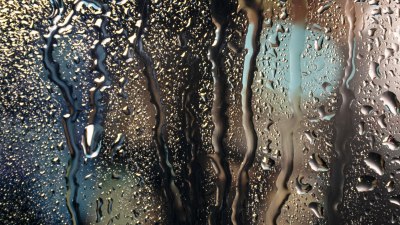Why Humidity Makes It Feel Hotter
Explore how humidity affects our perception of heat and why it makes temperatures feel more intense.

As summer approaches, many of us begin to feel the oppressive weight of heat. However, one significant factor often exacerbates our discomfort: humidity. But why does humidity make it feel hotter than it actually is? The answer lies in the science of how our body regulates temperature and the physical properties of water vapor in the air.
When we discuss weather, we often mention the temperature, usually measured in degrees Celsius or Fahrenheit. However, temperature alone doesn’t tell the whole story about how hot it feels outside. High humidity levels can significantly alter our perception of heat, often leading to discomfort and the potential for heat-related illnesses.
The Science of Humidity
Humidity is the amount of water vapor present in the air. It is usually expressed as a percentage known as relative humidity, which indicates how much moisture is in the air compared to the maximum amount the air can hold at a given temperature. For instance, at 30°C (86°F), air can generally hold about 30.4 grams of water vapor per cubic meter. If the air contains 24.3 grams of water vapor, the relative humidity will be 80%.
High humidity occurs when there is an abundance of water vapor in the atmosphere. This can happen through various methods, including evaporation from bodies of water, moisture from the ground, or weather patterns that bring moist air into a region. Unlike dry air, humid air can affect the body’s ability to cool itself, making hot temperatures feel even more unbearable.
The Body’s Cooling Mechanism
To understand why humidity intensifies the feeling of heat, it's essential to know how our bodies regulate temperature. The human body maintains a core temperature around 37°C (98.6°F). When we become too hot, our bodies respond by producing sweat. As sweat evaporates from the skin's surface, it takes heat away from the body, creating a cooling effect.
In dry conditions, sweat evaporates quickly, allowing our bodies to cool efficiently. But in high humidity, the air is already saturated with moisture, hindering the evaporation of sweat. Consequently, the cooling process slows down, causing the body to overheat.
The Heat Index
To quantify the effect of humidity on temperature perception, meteorologists use a measurement called the heat index. The heat index combines air temperature and relative humidity to give a more accurate representation of how hot it actually feels. For example, on a day when the temperature is 30°C (86°F) with 70% humidity, the heat index can make it feel more like 36°C (97°F).
This is particularly critical for those engaged in outdoor activities, as higher heat indices can lead to heat exhaustion and heat stroke if precautions aren't taken. Understanding your body’s limits in high humidity and extreme heat conditions is crucial.
The Dangers of High Humidity
High humidity doesn't just make the heat feel worse; it also poses several health risks. When the body struggles to cool down, it becomes susceptible to heat-related illnesses. Some common conditions associated with high heat and humidity include:
- Heat Cramps: Painful muscle contractions often caused by excessive sweating without adequate fluid and electrolyte replacement.
- Heat Exhaustion: A more severe condition characterized by heavy sweating, weakness, dizziness, and nausea.
- Heat Stroke: A life-threatening condition where the body temperature rises above 40°C (104°F), leading to confusion, seizures, and unconsciousness.
Moreover, individuals with chronic conditions such as asthma or heart disease may experience exacerbated symptoms in high humidity, making it even more vital to monitor the weather conditions carefully.
Adaptation to Humidity
One common question arises: can we adapt to high humidity? The answer is complex. Acclimatization can help the body become more efficient at cooling itself in humid conditions, however, it takes time. People who live in tropical climates often develop better tolerance levels for heat and humidity over time. Hydration, wearing suitable clothing, and minimizing strenuous activities during peak heat can also help maintain comfort levels.
People often turn to air conditioning and fans to combat the stifling effects of humidity. While these options provide immediate relief, they can sometimes mask the urgent need for hydration and proper self-care when heat indices climb.
Managing Heat Stress
Understanding the connection between humidity and perceived temperature can help individuals take proactive measures to manage heat stress. Staying hydrated is key; experts recommend drinking plenty of fluids, especially water, even if you don't feel thirsty. Sports drinks can offer replenishment of electrolytes lost through sweating.
Clothing choice also plays a vital role. Loose-fitting, light-colored garments made from breathable fabrics help wick moisture away from the body, allowing for better air circulation and evaporation of sweat.
When planning outdoor activities, consider the time of day. Keeping strenuous activities early in the morning or later in the evening can help avoid the hottest parts of the day. Be aware of the symptoms of heat exhaustion and heat stroke and act immediately if these symptoms arise.
As we navigate through the warm months, understanding how humidity influences our perception of heat can help us stay safe and comfortable. The adverse effects of high humidity can change the game when it comes to enjoying the great outdoors. By taking precautions, being aware of the heat index, and managing our exposure, we can relish the warmth without succumbing to its dangers.











